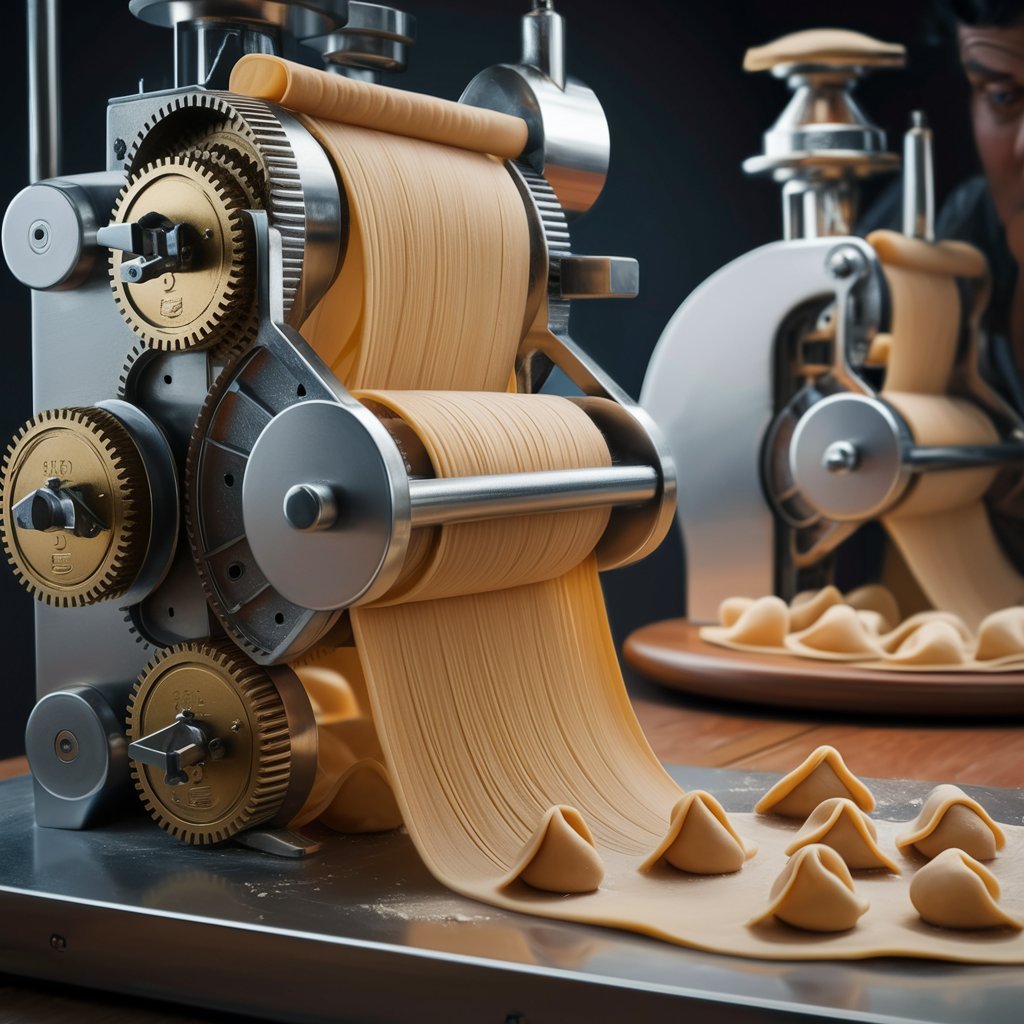Tortellinatrice: The Art and Machinery of Perfect Tortellini

The tortellinatrice is a specialized machine designed to automate the production of tortellini, the iconic stuffed pasta from Italy’s Emilia-Romagna region. Combining traditional craftsmanship with modern engineering, these machines replicate the delicate hand-folding technique used for generations, ensuring consistency and efficiency in both artisanal and industrial pasta-making.
While purists may argue that handmade tortellini have an irreplaceable charm, the tortellinatrice has become indispensable for meeting high demand without sacrificing quality. This article explores the history, mechanics, advantages, and culinary debate surrounding these fascinating machines, as well as their role in preserving Italy’s pasta-making heritage.
1. The Origins and Evolution of the Tortellinatrice
The invention of the tortellinatrice emerged in the mid-20th century as Italian pasta manufacturers sought ways to scale production while maintaining the intricate shape of tortellini. Early models were semi-mechanical, requiring manual dough feeding and adjustment, but modern versions are fully automated, capable of producing thousands of uniform tortellini per hour.
The design was inspired by the traditional method of folding small squares of pasta dough around a filling, sealing them into ring-shaped parcels. Over time, manufacturers like Arienti & Cattaneo, Zamboni, and others refined the technology, introducing features such as adjustable thickness settings, precision filling dispensers, and quick-change molds for different pasta shapes. Today, these machines are used worldwide, from small artisan workshops to large-scale industrial pasta factories.
2. How a Tortellinatrice Works: Mechanics and Precision
A tortellinatrice operates through a carefully synchronized process that mimics the steps of handmade tortellini. First, a thin sheet of pasta dough is fed into the machine, where circular cutters stamp out individual discs. A precise amount of filling—typically a mix of prosciutto, mortadella, Parmigiano-Reggiano, and nutmeg—is deposited onto each disc.
Then, the machine folds the dough over the filling, seals the edges, and twists it into the classic tortellini shape with a small hole in the center. Advanced models include sensors to detect inconsistencies in dough thickness or filling distribution, ensuring every piece meets quality standards. The speed and accuracy of these machines allow for mass production while maintaining the artisanal appearance that defines authentic tortellini.
3. Handmade vs. Machine-Made Tortellini: A Culinary Debate
Despite the efficiency of the tortellinatrice, a passionate debate persists between traditionalists and modern producers. Handmade tortellini, crafted by skilled sfogline (pasta-making women), are prized for their slight irregularities, which some argue enhance texture and sauce adherence. Each piece is shaped with care, often following family recipes passed down through generations.
On the other hand, machine-made tortellini offer unbeatable consistency, hygiene, and affordability, making them accessible to a broader market. Many high-end producers strike a balance by using tortellinatrici for bulk production while reserving handmade techniques for specialty batches. Ultimately, both methods have their place in Italian cuisine, catering to different needs without diminishing the cultural significance of this beloved pasta.
4. The Role of Tortellinatrici in Modern Pasta Production
In today’s global market, tortellinatrici play a crucial role in meeting the demand for high-quality stuffed pasta. Small-scale artisans use compact, semi-automatic models to increase output without losing the handmade essence, while industrial manufacturers rely on high-speed machines to supply supermarkets and restaurants worldwide.
The versatility of these machines extends beyond tortellini—many can also produce cappelletti, agnolotti, and other stuffed varieties with simple adjustments. Additionally, the rise of gluten-free and alternative-ingredient pastas has led to innovations in machine design, ensuring even niche products maintain the perfect shape and texture. As pasta consumption grows internationally, the tortellinatrice remains a key tool in preserving Italian culinary traditions while adapting to contemporary needs.
5. Maintaining and Choosing the Right Tortellinatrice
Selecting the ideal tortellinatrice depends on production scale, budget, and desired output quality. Artisan producers may opt for manual or semi-automatic models, which allow for hands-on control and customization. Larger operations require fully automated systems with integrated dough feeders, filling pumps, and drying conveyors.
Maintenance is critical—regular cleaning prevents dough buildup, while lubrication ensures moving parts operate smoothly. Many manufacturers offer training programs to help users optimize settings for different recipes. For those entering commercial pasta production, investing in a durable, adaptable tortellinatrice can significantly impact efficiency and product quality, making it a cornerstone of a successful pasta business.
Conclusion
The tortellinatrice represents a harmonious fusion of tradition and innovation, enabling the mass production of one of Italy’s most iconic pastas without compromising its essence. While handmade tortellini will always hold a special place in culinary culture, these machines ensure that更多的人 can enjoy authentic, high-quality tortellini worldwide. From small workshops to industrial kitchens, the tortellinatrice continues to shape the future of pasta production, honoring centuries-old techniques while embracing modern efficiency. Whether crafted by hand or machine, each tortellino carries the rich heritage of Emilia-Romagna—a testament to Italy’s enduring love affair with pasta.




